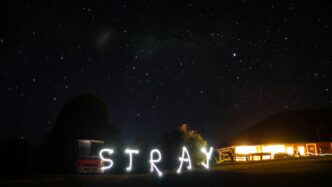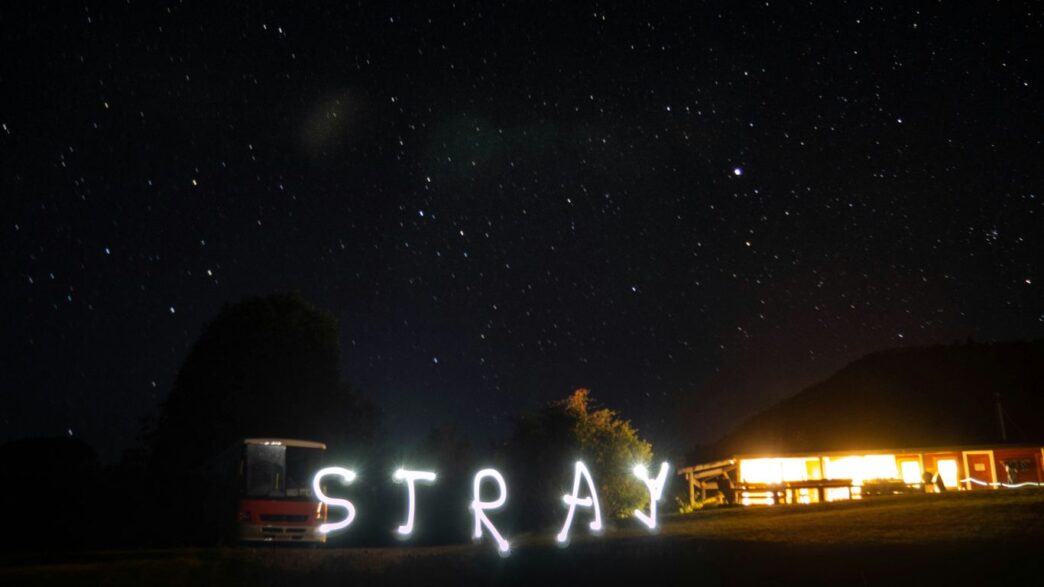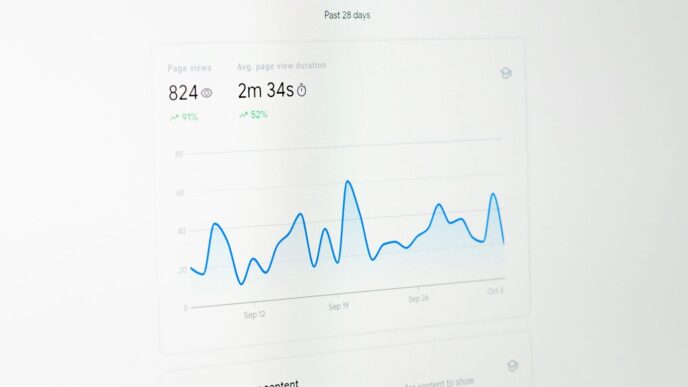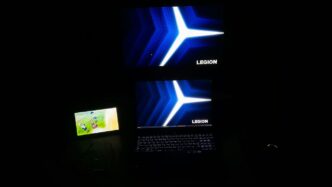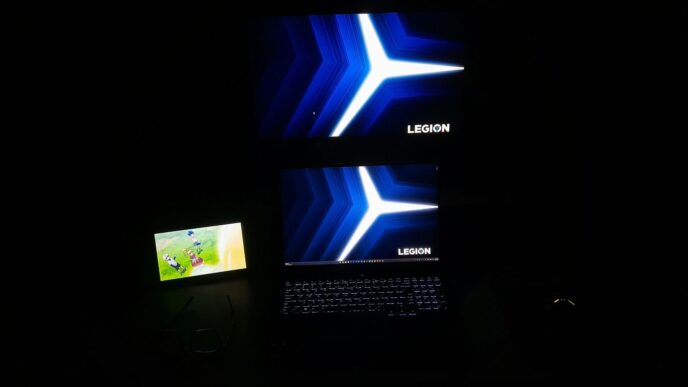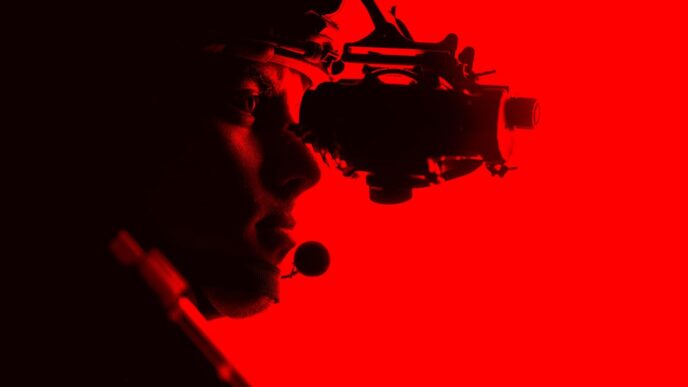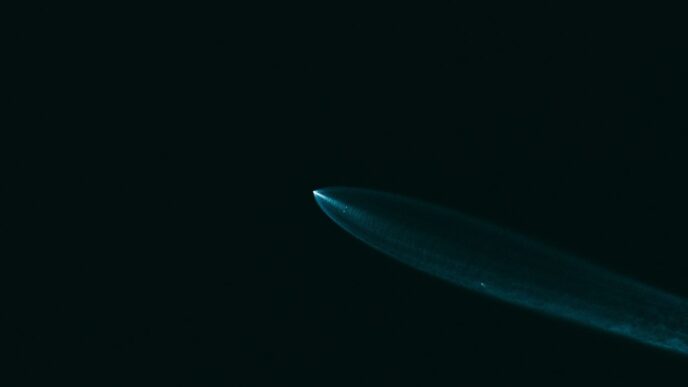Ever looked up at the night sky and seen a line of lights zipping across? Chances are, you’ve spotted the Starlink satellites. These aren’t UFOs, but rather part of a huge internet network being built by SpaceX. Seeing them can be pretty cool, especially when they’re all lined up after a launch. This guide will help you figure out when and where to catch this celestial show, using the latest tools and tips. We’ll cover everything from the best apps to live trackers, so you don’t miss out on seeing the Starlink satellites tonight live.
Key Takeaways
- Starlink satellites appear as a line of lights, often called a ‘train,’ shortly after a SpaceX launch while they are still close together in low orbit.
- You can see Starlink satellites because they reflect sunlight; they don’t have their own lights. They are best viewed just after sunset or before sunrise.
- Several apps and websites, like Satellite Tracker, Sky Tonight, Star Walk 2, Heavens-Above, and findstarlink.com, act as a starlink satellites tonight live tracker, showing you when and where they’ll be visible from your location.
- Visibility of Starlink trains is best in the days following a launch. As satellites spread out and move to higher orbits, they become less noticeable as a group.
- Tracking Starlink satellites requires checking launch schedules and using real-time tracking tools, as their visibility depends on orbital position and sunlight illumination.
Understanding the Starlink Satellite Train
So, what exactly is this "Starlink satellite train" everyone’s talking about? It’s basically a line of newly launched Starlink internet satellites from SpaceX. Think of it like a string of pearls, but in space. These satellites are sent up in batches, sometimes dozens at a time, and for the first few days after a launch, they stick pretty close together as they make their way to their final orbits.
What Is a Starlink Satellite Train?
When SpaceX sends up a new group of Starlink satellites, they don’t immediately spread out. They travel in formation, all at roughly the same speed and altitude. This creates a really striking visual effect in the night sky – a series of bright lights moving in a straight line. It’s this temporary alignment that we call the Starlink satellite train. Because they’re relatively low in orbit at this stage, they’re quite visible to the naked eye, especially on a clear, dark night. It’s a pretty unique sight, and honestly, it’s easy to see why some people might mistake it for something else, like a UFO, because it looks so unusual.
Why Are Starlink Satellites Visible?
These satellites are visible for a few key reasons. First, they’re made of reflective materials, like aluminum, which catch the sunlight. When the sun is below the horizon for you on the ground, but still shining on the satellites up in orbit, they appear bright against the darkening sky. Second, as mentioned, they start out in a tight group. This concentration of lights makes them stand out. However, this visibility doesn’t last forever. As each satellite maneuvers into its designated operational orbit, which is much higher up, they begin to spread out. Once they’re in their final positions, they become much harder to spot without binoculars or a telescope, and they no longer form that distinct train.
The Lifespan of a Starlink Train
The "train" effect is a fleeting phenomenon. It typically lasts for just a few days after a launch. During this period, the satellites are ascending from their initial deployment orbit to their final operational altitude. This process involves individual satellite adjustments and orbital maneuvers. Here’s a general timeline:
- Day 1-3 Post-Launch: Satellites are in close proximity, forming the most visible "train." They are at their lowest orbital altitudes, making them brighter.
- Day 3-7 Post-Launch: Satellites begin to separate and ascend to higher orbits. The train starts to break up, and individual satellites become less distinct.
- Beyond 7 Days: Most satellites have reached their operational orbits. They are now spread out across the sky and are significantly harder to see with the naked eye, often blending in with other stars.
Finding Starlink Satellites Tonight Live
So, you’ve heard about those bright lines of light zipping across the night sky and want to see them for yourself? It’s totally doable, but you need to know when and where to look. The key is using the right tools to predict their passes over your specific location.
Using a Starlink Satellite Tracker
Think of a satellite tracker as your personal sky guide. These apps and websites are designed to show you exactly when and where the Starlink satellites will be visible from your backyard. They take into account the complex orbital mechanics and your precise location to give you the best viewing times. It’s not just about knowing if they’ll pass overhead, but also the optimal window to catch them.
Real-Time Starlink Satellite Maps
For a live view of what’s happening above, real-time satellite maps are fantastic. These maps show you the current positions of the Starlink satellites as they orbit the Earth. You can often see them moving across a globe, giving you a sense of their vast network. Some maps even show upcoming launch trajectories. It’s a great way to get a feel for the scale of the Starlink constellation and to spot potential viewing opportunities. You can explore a live, interactive map displaying the positions of Starlink, SpaceX, Kuiper, and GPS satellites at satellitemap.space.
When and Where to Look for Starlink
Timing is everything when it comes to spotting Starlink trains. The best times are usually shortly after sunset or just before sunrise. During these periods, the satellites are still catching the sun’s rays while the ground below is in darkness, making them appear as bright, moving stars. Here’s a quick rundown:
- Post-Sunset Viewing: Look west or northwest shortly after the sun dips below the horizon.
- Pre-Sunrise Viewing: Look east or northeast just before the sun comes up.
- Dark Skies: The darker your viewing location, the easier it will be to see the satellites. Light pollution can really wash them out.
Knowing these general times helps, but for precise sightings, you’ll want to use a dedicated tracker. These tools can provide specific times for passes visible from your exact coordinates, often down to the minute.
Top Apps for Tracking Starlink
So, you want to catch a glimpse of those Starlink satellites zipping across the night sky? While websites are great for planning, sometimes you need something right there on your phone. Luckily, there are some pretty handy apps that can help you pinpoint these celestial trains. These mobile tools put real-time tracking and visibility predictions right in your pocket.
Satellite Tracker App Features
This app is a solid choice if you’re serious about tracking satellites. It’s designed specifically for this purpose, showing you where satellites are in orbit and their paths. You can even see a 3D model of a satellite in its current position above the Earth, which is pretty neat. To find the Starlink trains, you just tap the satellite icon, select "All," and then find the "SpaceX’s Starlink" section. From there, you can pick which launch you’re interested in and hit "Track." It’s a straightforward way to keep tabs on them.
Sky Tonight: Locating Starlink Groups
If you’re looking for an app that makes finding Starlink groups a bit more visual, Sky Tonight is a good option. It helps you track these satellite clusters, giving you a clearer picture of when and where they’ll be visible from your location. It’s designed to be user-friendly, so you don’t need to be an astronomy expert to figure it out. You can get predictions and plan your viewing sessions without too much fuss.
Star Walk 2: Visualizing Satellites
Star Walk 2 offers a more immersive experience for those who enjoy the visual aspect of stargazing. While it’s a broader astronomy app, it does a good job of helping you visualize where satellites, including Starlink, will be in the sky. It’s great for getting a feel for the celestial movements and understanding how the satellite trains fit into the bigger picture of the night sky. For anyone interested in seeing the satellites and understanding their paths, these apps are definitely worth checking out.
Upcoming Starlink Launches and Visibility
Ever wonder when the next batch of Starlink satellites will zoom overhead? SpaceX is launching these internet-beaming satellites pretty regularly, and knowing the schedule can really help you catch a glimpse of that famous "train" effect. It’s not just about the launches themselves, but also about when those newly launched satellites are in just the right spot to catch the sun’s rays.
Monitoring Launch Schedules
Keeping tabs on upcoming launches is your first step. SpaceX usually announces launch dates and times, and there are several websites that track these. Think of it like checking the weather, but for space launches. The more frequent the launches, the more chances you have to see a fresh train of satellites.
- SpaceX’s official website: Often has the most up-to-date information.
- Spaceflight news sites: Many dedicated sites report on upcoming rocket launches.
- Satellite tracking apps: Some apps include launch information alongside tracking data.
Post-Launch Visibility Windows
This is where the magic happens. For a few days after a launch, the satellites are still in a low orbit, clustered together. This is the prime time to see them as a distinct line of lights moving across the sky. They’re usually most visible shortly after sunset or just before sunrise. Why then? Because the satellites are high enough to catch the sunlight, but the ground below you is already dark. It’s a fleeting window, though, as they quickly move up to their operational orbits and spread out.
How Often Can You See Starlink?
It really depends on where you are and how often SpaceX launches. With launches happening frequently, sometimes multiple times a week, you can get lucky and see a Starlink train quite often. However, it’s not a guarantee every night. The satellites orbit the Earth about every 90 minutes, so theoretically, you could see them multiple times in one evening if the conditions are right. Keep in mind, though, that newer satellites have features to make them less bright, so they might not be as spectacular as they once were. It’s all about catching them at the right time and in the right part of their orbit.
Advanced Starlink Tracking Resources
Sometimes, the apps and simple trackers are great, but if you want to get really serious about Starlink spotting, there are some more detailed websites out there. These sites often provide more in-depth data and predictions, which can be super helpful for planning your viewing.
Heavens-Above Website Predictions
Heavens-Above is a classic for satellite watchers. It’s been around for ages and has a dedicated section just for Starlink. You can pick a specific Starlink mission you’re curious about, set the date, and it’ll tell you when the satellites are supposed to pass over your area. It’s pretty detailed, so you can really zero in on the best times.
N2YO.com Satellite Tracking
N2YO.com is another solid choice. If you know the name of a specific Starlink satellite (though most people track the trains), you can type it in, and it’ll show you its current spot and where it’s headed. They also offer predictions for the next 10 days, which is handy if you like to plan ahead. It gives you a lot of info about each satellite.
FindStarlink.com Live Map
FindStarlink.com is really popular, and for good reason. It’s great for seeing when Starlink trains are expected to be visible from your specific location. Just pop in your city or coordinates, and it’ll give you a list of upcoming flybys, ranked by how visible they’ll be. Their live map feature is also a big plus, letting you see the paths of the satellites across the globe in real-time. It’s a good way to get a general idea of where the trains are at any given moment.
Maximizing Your Starlink Viewing Experience
So, you’ve got the apps, you know when to look, but how do you make sure you catch the best possible view of those Starlink satellites? It’s all about a little bit of planning and setting yourself up for success. Don’t just hope for a good sighting; make it happen!
Setting Up Visibility Reminders
Honestly, the easiest way to not miss a Starlink pass is to set up reminders. Most tracking apps, like the one from findstarlink.com, let you do this. You pick a predicted sighting, and the app will ping you about 30 minutes beforehand. It’s like having a personal sky alert system. You can even set multiple reminders if you want to catch a few passes throughout the night. It really takes the guesswork out of it.
Best Times for Starlink Sightings
When are you most likely to see them? Generally, the best times are shortly after sunset and just before sunrise. During these periods, the satellites are still catching the sun’s rays, making them bright against the darkening or lightening sky. They’re at their lowest orbit right after deployment, which is when they’re most visible. Keep in mind, they move fast – about 500 kilometers every minute! So, even if you miss one pass, another might be along in about 90 minutes.
Photographing Starlink Satellites
Want to capture that train of lights? It’s tricky but doable. You’ll need a camera that allows for manual settings, preferably a DSLR or mirrorless camera. Set your ISO relatively high, your aperture wide open (lowest f-number), and use a long exposure time – think 15 to 30 seconds. A tripod is absolutely a must to keep the camera steady. The key is to experiment with your settings based on the ambient light and the predicted brightness of the Starlink pass. Sometimes, you might just catch a streak of light, while other times, if you’re lucky and the conditions are right, you might get a clear shot of the whole train.
Here’s a quick rundown for camera settings:
- ISO: 800-3200 (adjust based on light)
- Aperture: f/2.8 or wider
- Shutter Speed: 15-30 seconds
- Focus: Manual focus to infinity
- Equipment: Tripod, wide-angle lens
Keep Looking Up!
So there you have it. Seeing those Starlink satellites streak across the sky can be pretty neat, almost like a little show put on by SpaceX. It’s not too hard to catch them if you know when and where to look, and those apps we talked about can really help with that. Just remember, they look best right after a launch when they’re all lined up. Keep an eye on the schedules, grab a tracking app, and head outside on a clear night. You might just see something pretty cool. Happy stargazing!
Frequently Asked Questions
What exactly is a Starlink satellite train?
Imagine a string of bright lights moving across the night sky. That’s a Starlink satellite train! It happens when SpaceX launches a bunch of Starlink satellites together. They stay close for a while, looking like a train, before spreading out.
Why can we see Starlink satellites?
Starlink satellites don’t have their own lights. We see them because they reflect sunlight. This is most noticeable right after sunset or before sunrise when the satellites are still lit up by the sun, but the ground below is dark.
How long do Starlink trains stay visible?
The ‘train’ effect is usually temporary. It’s best seen right after a launch when the satellites are still close together in a low orbit. As they move to their higher, working orbits, they spread out and become harder to see as a group.
How can I find out when Starlink satellites will be visible near me?
There are special apps and websites that can help! They act like trackers, showing you the exact times and directions to look for Starlink satellites from your specific location. It’s like having a personal guide for spotting them.
Are there many Starlink launches happening?
Yes, SpaceX launches Starlink satellites quite often, sometimes multiple times a week. This means there are usually good opportunities to see them, especially soon after a new batch is sent into space.
Do Starlink satellites ever fall back to Earth?
Sometimes, if a satellite doesn’t make it to its correct orbit or stops working, it will fall back to Earth. When this happens, it burns up in the atmosphere, creating a fiery streak across the sky. It’s quite a dramatic sight!

